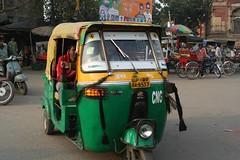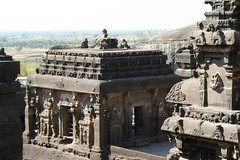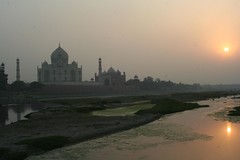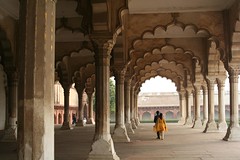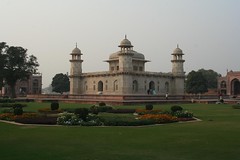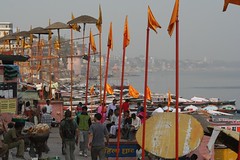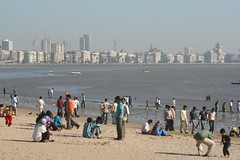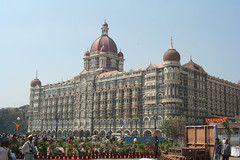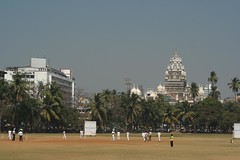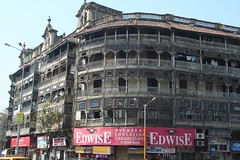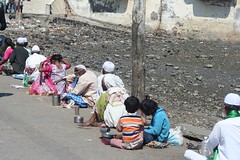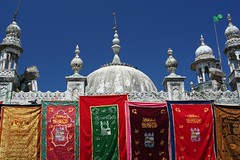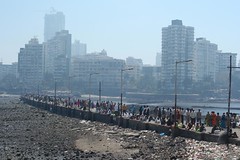After six rather exhausting weeks we left India on an early morning flight from Kolkata to Bangkok. As the purgatory of contradictory emotions faded behind the silver wing of the plane in the misty morning air I sat buckled in my cramped middle seat thinking that I should be able to say that I learned something from my Indian experience, preferably something deep, something about beauty, kindness or spirituality. Instead, all I could come up with was that I had become more skilled at bargaining for the last twenty rupees, that I learned how to dismiss the touts, hawkers, peddlers and beggars more gracefully, that I no longer got frustrated when people didn’t give me a straight answer and that I could live without toilet paper. A few months before in Egypt, the constant harassment that I had been subjected to had all but drained my reserves of social empathy, but India’s renewed assaults on my patience had in fact increased my tolerance to unwanted human contact and strengthened my ability to deal with ambiguity. In a country where nobody says “no” when they should, and every question is answered with a perplexing side-to-side wobble of the head that could mean anything, frustration and anger won’t get you too far...
Every interaction is a bit of a struggle. Going to the place of your choice is a feat of endurance and patience when you have to depend on taxi or rickshaw drivers to take you there; they will try to divert you to the hotels where they get commission for your business (if you’re leaving the railway station or airport) and will ask you many times to reconsider your destination, ignoring each “no” that you blurt from the back seat, increasingly annoyed by their tenacity. Otherwise, if you’re just taking a ride through town you will be bombarded with offers to be taken to a great shop “only for looking”; if you’re hiring the driver for a city-tour the shopping trap may be disguised as “a quick visit to the cultural museum.” “No” is always the best policy; you may feel stupid for having to answer the same question again and again, but you can’t help admire their perseverance and optimism – the available rickshaws sitting idle far outnumber the tourists in search for a ride and the lucky winner of your business will understandably try a couple of tricks to add a few rupees to his evening meal.
I don’t usually require a high level of comfort when I travel; I do well in noisy backpacker places, I’m ok sharing bathrooms, I’m fine enough if the sheets are clean and the toilet flushes, and I don't think hot water at the shower is necessary in a tropical climate. But in India, low-maintenance as I am, I had to lower my standards even more. Cheap rooms in budget hotels are rather gloomy; the crudely painted walls are stained with the flattened innards of dead mosquitoes, hard beds and lumpy, thin pillows are the norm, the weak pipes may catch you off guard with unexpected leaks and water jets when you turn on the wobbly and often slimy faucets; the drain may often be a simple plastic tube spilling its guts over your feet. You’ll pray that the floor is well surfaced and all the water flows toward the drain, but that’s not always the case and your bathroom will end up with a permanent puddle in one corner. There aren’t any bath tubs, shower cages or curtains; taking a shower means flooding the whole bathroom; you’ll wash the floors, the walls and the toilet as well, and if you don’t pay attention you’ll soak the toilet paper – but only if you brought some with you; generally it’s not provided since Indians do not use it.
Hotel rooms have switches outside by the doors, which control the power to the plugs and light bulbs inside. Since the doors all have padlocks the hotel staff knows when you are not in your room and always turns the power off if you happened to leave it on. Forget about charging your camera batteries while you are out for dinner. Power cuts, accidental or planned, are frequent, making air-con rooms a less-desirable investment. Beer will be warm and hell only knows what happens with the frozen chicken during the blackout hours (just another reason to become vegetarian!) but internet will generally work – that’s what batteries are for, right?
I could continue to add details to the list of little strange things, uncomfortable situations and puzzling attitudes India assaulted us with, from the complicated telephone network made from a patchwork of incompatible operators to the strange but efficient train class and reservation system, from the unlicensed restaurants selling Kingfisher beer camouflaged in tea-pots and white cups, calling it “special tea” to the menu cards featuring fifty-four different types of masala dosa, from the irritating, dumb stares to the almost complete lack of display of public affection between Indian couples… but I’m afraid I would never finish and my blog will be forever stuck trying to cover India.
Beauty is everywhere, they say, you just have to know how look for it. And in India beauty is very well hidden behind rubble, trash and smog, a little less so in the countryside; it requires serious training and self-discipline to uncover. Nevertheless, a lot of travelers seem to be successful and find here whatever they were looking for; they leave elated and promise to return, undeterred by all the cow shit, the public pissing and shitting, the diarrhea, the hassle and the filthy toilets. For every tourist who finds his or her blissful karma in India there must be at least two or three who leave in tears, angry, sick and disappointed, and vow never to return before they show the finger to the airport departure hall one last time. I do not belong to either of those extreme categories; I had my share of disgust and anger but I was lucky enough to find peace and beauty when I least expected it; I cursed and rolled my eyes in frustration but I also smiled and went with the flow. I surrendered to India’s ebb and tide of sensations; I merely poked a finger at the magic mirror that opens into Wonderland. I will be back someday, armed with nothing but patience and an open mind.
Posted from Ao Nang, Krabi Province, Thailand.



